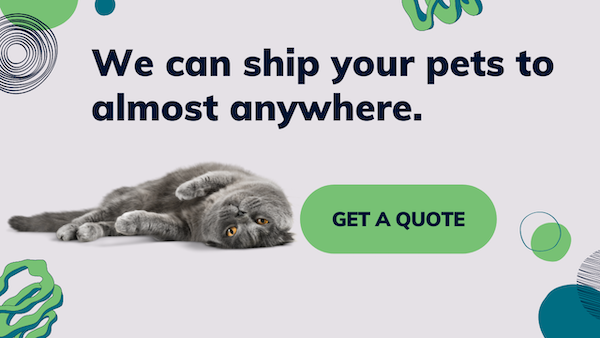When to Sedate Your Pet and When Not To
Updated on: August 16, 2024 | Author: Starwood Pet Travel

There are moments when our furry companions can push our buttons. They may become restless, vocalize loudly, and resist following commands. Sometimes, they may even forget their indoor manners and training. In those challenging times, you might be wondering when it's okay to sedate your pet, and when it's not. The decision to use sedatives should be carefully considered, as they can have risks and may not be suitable for every situation.
Are they being handled by other people?
While some dogs and cats may be naturally calm and cooperative during exams, others may become fidgety, playful, or even fearful. However, regular nail trims and check-ups are essential for maintaining their well-being. In such situations, sedation can be beneficial in helping pets remain calm and allowing for proper handling.
Are there other stressors effecting their behavior?
Cats thrive on routine, so any sudden changes can be particularly distressing for them compared to dogs. Various triggers, such as a visit to the vet or a move to a new home, can easily stir up anxiety in both types of pets. Some newly-adopted animals, still adjusting to human interactions, may dread getting into the car or feel uneasy during the journey, leading to jitteriness or stomach upset.
External factors like loud noises from fireworks, thunderstorms, or the commotion of a party can also unsettle our furry friends. No pet owner wants to see their beloved companion feeling scared or stressed. Luckily, there are ways to help your pet ease their anxiety and feel more at ease.
Are they going to be flying on a plane?
If your furry friend is preparing to embark on a long-distance or international journey by air, it's crucial to understand that sedatives are not permitted. The use of tranquilizers in animals can lead to unforeseen side effects. Consequently, airlines and professional pet transportation services strictly prohibit the administration of sedatives due to the heightened health and safety risks for both dogs and cats.
Sedated pets experience a loss of muscle coordination, making it challenging for them to maintain their balance. Additionally, sedatives can induce a state of mental confusion, leaving pets feeling disoriented and unsure of their surroundings. Sedatives can also have negative effects on an animal's respiration and heart rate when they are up in the air at high altitudes.
So, how can you support your furry traveler during this time? By allowing ample opportunity for them to acclimate to their travel crate. Dogs and cats must travel in airline-approved carriers, specifically designed to provide enhanced durability and safety compared to standard household crates. This designated space will serve as their sanctuary while in transit, creating a sense of familiarity and comfort that can help them stay relaxed throughout the journey.
What alternatives are there to sedatives?
Your vet might suggest one of various prescription medications to address specific or severe anxiety. However, there are plenty of alternative options available on the market that you can explore as well. Some are suitable for both cats and dogs, while others are tailored to specific species.
Herbs and essences
Various calming aids can assist in relaxing your furry companion, whether they are a cat or dog. These aids come in a range of forms, such as chewable “treats”, essential oils, sprays, and collars.
It is important to note that natural products are still substances that interact with your pet’s body, similar to drugs. Since pets vary in sizes and weights, the dosage of any ingested product is crucial. This includes herbs like valerian or kava.
Lavender is a popular choice for its calming properties, loved by humans and sometimes considered safe for pets. While some sources warn of potential dangers for cats, most experts agree that using lavender for aromatherapy purposes is a better option than allowing pets to ingest the highly concentrated oil from the leaves. Similarly, catnip can have a calming effect on cats through its scent, but ingestion can lead to potential illness.
Pheromones
Mama dogs release pheromones to calm nursing puppies. Cats have unique facial pheromones they use to mark their property. Products that reproduce pheromones or mimic their effects may help reduce your pet’s anxiety. Feliway is a popular example.
Clothing
Wraps such as Thundershirt provide a snug, calming “hug.” And headgear such as the ThunderCap make it harder for pets to see scary distractions.
Music
Recordings for dogs and cats usually use slow-paced classical music to produce a stress-reducing background.
Talk to your vet first
Before giving your pet any calming aids or medications, it's essential to consult with your veterinarian first. Just like humans, pets have varying tolerance levels and reactions to different substances. Age, overall health, and even gender can play a role in how our beloved companions respond to treatments. So, always seek professional guidance before making any decisions regarding your pet's well-being.
Photo by Christoph Schmid on Unsplash
Subscribe to the Blog
Enjoy our content? Get them sent to your inbox!
Subscribe Now!

